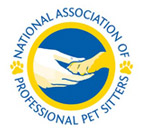 Photo by PublicDomainPicture
Photo by PublicDomainPicture
There’s no greater gift you can give to a rescue than a loving home. And while you can rest assured your new furry family member appreciates every ounce of love you send their way, that doesn’t always mean they’re going to be a perfect fur angel.
As you know, rescues come from all walks of life. Some may be needing a new home after their elderly caregiver has passed away. Some may have been abandoned or neglected by their previous owners. Some may have already spent a good deal of time in a rescue facility or foster home. Whatever your rescue’s background, you may not truly get a feel for their level of training until you’ve brought them home. So, what can you do to turn a rescue with no training into a well-behaved pet? Here are a few tips:
Set them up for success. Moving to your home will be a big transition for your new pooch, so do what you can ahead of time to make the change as easy as possible for them. First, do a sweep of your home with an eye out for hazardous materials, such as cleaning supplies or small objects that could end up being choking hazards. Make sure these are safely stored away before your pet arrives. Then, do a sweep of your home looking for factors that might get your pooch into trouble. For example, if there’s an antique chair and you’d be devastated if it were chewed on, move it to an area of your home that will be off limits to your pet. If you have a fenced-in backyard, make sure there are no escape routes and keep a close eye on whether your pet is a digger. Taking precautions early on can make the whole transition go a lot more smoothly.
Make training a family affair. Your kids are probably even more excited than you to bring home your new four-legged family member. They’ll want to show your pooch affection and get as much affection back as possible, so they may shower your pet with treats and encourage bad behavior, especially if it’s funny–what’s more hilarious than watching dad’s slipper get ripped to shreds! So, from day one, make sure your kids are on board with training. Be sure they’re aware of what behaviors to look out for and know how to handle them. Make sure they help your new dog avoid problems by picking up toys, shoes, socks, etc., that a not-yet-trained pooch might mistake for a toy. Keep in mind that it will be helpful for your kids to know basic commands, like sit and stay, so if possible have them come with you to your pet’s obedience classes.
Get them on a schedule. Right away, get your rescue on an eating and potty schedule. This routine will make life easier on both of you. If you’re lucky the rescue facility that previously housed your pet, already had them on a good schedule. Check with them to see what time your pet will expect to eat, how often your pet typically needs to potty, and so on. The structure a schedule provides will help you both get settled into your new life together. This is also another great way to involve your children. If you have an older, responsible child, assign them to fill up your dog’s water and/or food bowl each morning before school. Younger kids can be in charge of alerting you any time they see your pooch waiting by the door to go outside. Of course, you’ll still need to keep an eye on these things yourself, but assigning these chores to your kids keeps them involved in the training process and can help create consistency with the whole family.
Socialize your pooch. One great way to help your pooch get used to being around other dogs is an obedience class. Many pet stores offer them. Just check with one in your area or ask your vet for a recommendation. If you’re confident your rescue can handle being around other dogs, you can help them further socialize and get out some energy at your local dog park. Dog parks are also great places for your kids to practice using commands they’ve learned on your dog. Most cities and towns, regardless of size, have at least one bark park for their local dog owners.
Know how to handle disobedience. There’s a good chance your rescue had a hard life before coming to live with you. Keep that in mind the first time they chew on something they shouldn’t have or have an accident on your new rug. Do not ever yell at or threaten to hit your rescue. Instead, ignore bad behavior while rewarding the good. When your dog does something right, give them a treat. That way they’ll associate the behavior with something good. Make sure your kids know how to handle bad behavior. If for example, their favorite shoe gets chewed, tell them they should let you know rather than scold or yell at the dog. At the same time, they shouldn’t hide a pooch’s bad behavior either. Make it clear that the dog won’t be “punished” for bad behavior, but you still need to know about it in order to plan the dog’s training properly. And by all means, be patient. Despite the old saying, old dogs can learn new tricks; it may just take them a little longer.
While getting a rescue is certainly exciting, it usually doesn’t take long for reality to set in once you get them home. But not to worry, while rescue dogs need a lot of love and attention, they’ll give it back to you in bundles.











Speak Your Mind